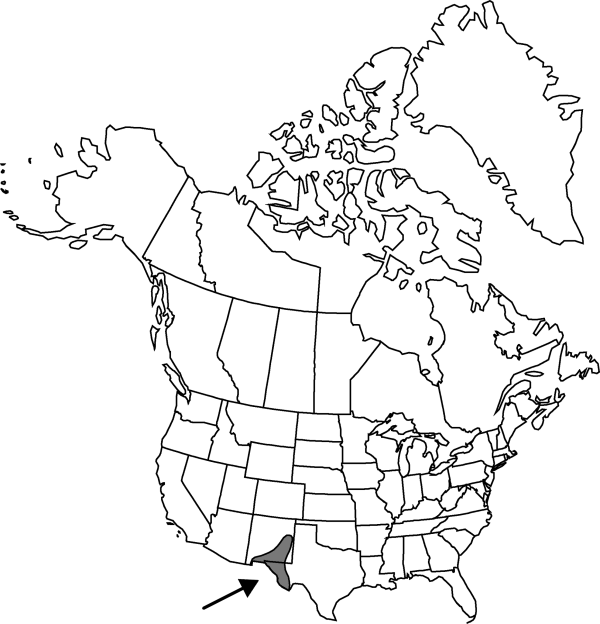Cylindropuntia kleiniae
in C. Backeberg and F. M. Knuth, Kactus-ABC, 123. 1935.
Shrubs scraggly, openly branched, 0.5–2.5 m. Stem segments usually alternate, green, 4–20 × 0.6–1.2 cm; tubercles obvious, 1–2.5 cm; areoles subcircular to oval, 2.5–3.5 × 2–3 mm; wool yellow, aging gray to black. Spines (0–) 1–2 (–4) per areole, at most areoles, straight to slightly arched, commonly deflexed, not obscuring stem, yellow to gray, tipped yellow, acicular, the longest 1–3 cm. Glochids in adaxial tuft, yellow, 0.5–2.5 mm. Flowers: inner tepals greenish basally to reddish bronze, tinged magenta apically, spatulate-apiculate, 15–25 mm; filaments greenish basally to bronze distally; anthers yellow; style greenish bronze; stigma lobes cream. Fruits green becoming red, obovoid to cylindric, 13–34 × 10–20 mm, fleshy, low tuberculate to smooth, spineless; tubercles subequal; umbilicus 3–6 mm deep; areoles 16–28. Seeds tan, squarish to oval, 4–5 × 3.5–4 mm, warped, sides smooth to lumpy; girdle broad, low-ridged. 2n = 44.
Habitat: Chihuahuan Desert, creosote bush-mesquite flats, limestone rocky slopes
Elevation: 800-1800 m
Distribution

N.Mex., Tex., Mexico (Chihuahua, Coahuila, Durango, Nuevo León).
Discussion
In western Texas and northern Mexico, Cylindropuntia kleiniae forms hybrids with C. leptocaulis (= C. ×antoniae P. V. Heath) that have varying degrees of morphologic intermediacy and chromosome number of 2n = 33. In northern Mexico, C. kleiniae hybridizes with C. imbricata var. imbricata. Cylindropuntia kleiniae itself may be of hybrid origin.
Selected References
None.